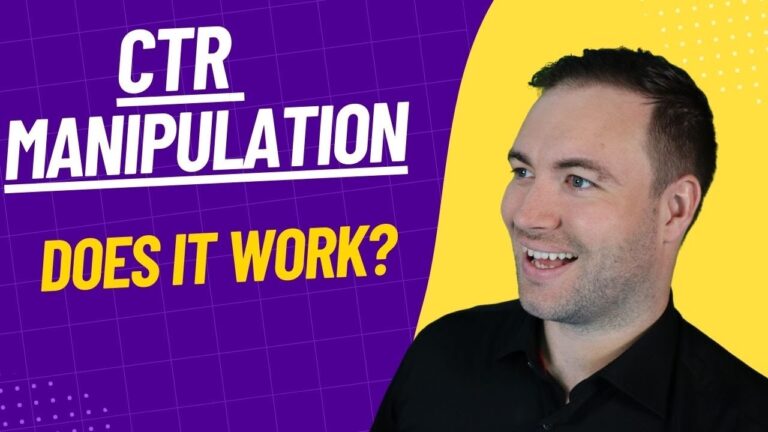Unlock Greater Positions with Effective CTR Manipulation Techniques
Unlock Greater Positions with Effective CTR Manipulation Techniques
Blog Article
Maximizing Organic Click-Through Fees With CTR Adjustment
The optimization of natural click-through rates (CTR) is a nuanced endeavor that pivots on comprehending both user psychology and reliable web content discussion. The landscape is rife with misconceptions and oversimplifications regarding what truly drives CTR.
Comprehending Click-Through Rates
Comprehending click-through prices (CTR) is crucial for evaluating the efficiency of internet marketing approaches. CTR gauges the portion of users who click on a certain web link or promotion compared to the complete variety of individuals that view it. A greater CTR shows that the content is involving and relevant to the target market, while a reduced CTR may signify a need for optimization.
To determine CTR, separate the variety of clicks by the variety of perceptions and multiply by 100. For example, if an advertisement gets 300 clicks out of 10,000 perceptions, the CTR would certainly be 3%. This metric is vital for analyzing different components of digital marketing, including search engine optimization (SEARCH ENGINE OPTIMIZATION), e-mail projects, and social media marketing.
Additionally, assessing CTR assists marketers identify which methods generate the best outcomes and which call for improvement. By concentrating on improving CTR, companies can improve their web content's exposure and efficiency, resulting in boosted website traffic and possible conversions. Comprehending the subtleties of CTR is foundational for any type of marketer aiming to optimize their on-line visibility and make best use of roi (ROI)

The Psychology of Customer Behavior
User actions is dramatically influenced by psychological variables that dictate how people engage with on the internet web content. Recognizing these aspects is vital for maximizing click-through rates (CTR) in organic search results.
Psychological actions additionally significantly influence individual actions. Web content that reverberates emotionally can set off a sense of necessity or inquisitiveness, motivating users to click. Additionally, social evidence-- such as user evaluations or scores-- can enhance trust fund and encourage involvement, as people frequently look to the habits of others to educate their own decisions.
Additionally, the concept of shortage can drive clicks - LinkDaddy CTR Manipulation. Limited-time deals or unique web content create an anxiety of losing out (FOMO), compelling users to act swiftly. Understanding these mental drivers makes it possible for marketing professionals to create even more engaging material that resonates with their target audience
Efficient CTR Control Methods
Leveraging emotional insights can considerably improve click-through rates (CTR) through targeted control strategies. Among one of the most reliable methods is the usage of compelling headlines that evoke inquisitiveness or urgency. Phrasing titles as concerns or including numbers can attract more focus, prompting individuals to click.
An additional strategy includes optimizing meta descriptions to develop a feeling of importance and immediacy. By clearly laying out the options or advantages offered in the material, you can engage possible readers and convince them to click. Furthermore, using power words-- such as "unique," "confirmed," or look what i found "complimentary"-- can boost the allure of your web content.
Aesthetic aspects also play a vital role. Including distinctive pictures or thumbnails can draw individuals in and improve CTR. A/B screening various visuals can aid determine which pictures reverberate finest with your target market.
Lastly, ensuring that your web content promises deliverable worth brings about greater CTR. They are a lot more likely to involve when individuals regard that clicking will supply them with significant understandings or services. By employing these strategies attentively, online marketers can successfully manipulate CTR to their advantage while maintaining ethical requirements.
Common Myths Concerning CTR
A number of misunderstandings surround click-through rates (CTR) that can lead marketing experts to make illinformed decisions. One prevalent misconception is that a higher CTR always converts to far better performance. While a high CTR recommends that more customers are clicking, it does not assure conversions or sales. Eventually, the effectiveness of website traffic depends on the top quality of the touchdown web page and the importance of the web content.
Another common belief is that CTR is an isolated metric. Actually, CTR ought to be examined combined with various other efficiency signs, such as bounce rate and conversion rate, to obtain an alternative view of campaign success.
In addition, some online marketers presume that maximizing for CTR alone is adequate. Nonetheless, focusing solely on CTR can bring about clickbait techniques that might bring in clicks but fail to involve individuals meaningfully. This strategy can harm brand name online reputation and cause reduced retention prices
Finally, there is an idea that CTR methods are globally efficient. The reality is that ideal CTR methods can differ significantly throughout sectors and target market, demanding tailored strategies for various market segments. Recognizing these myths is critical for establishing reliable CTR approaches that straighten with overarching marketing objectives.
Measuring CTR Success
Although high click-through rates (CTR) can indicate effective engagement with web content, measuring their real success needs a detailed analysis of several factors. Initially, it is necessary to understand the context in which the CTR is achieved. For example, a high CTR on a deceptive title may not translate to significant involvement or conversions, inevitably reflecting poorly on the brand's trustworthiness.
2nd, reviewing the source of traffic is essential. Organic traffic from search engines can symbolize a durable content method, while clicks from unnecessary resources may suggest a lack of targeting. In addition, gauging the subsequent user behavior is crucial; analyzing metrics such as bounce price, time spent on page, and conversion prices can supply deeper understandings right into the quality of the interaction launched by the CTR.

Conclusion

The optimization of natural click-through prices (CTR) is a nuanced undertaking that pivots on comprehending both user psychology and effective web content presentation. CTR determines the percent of individuals who click on a specific web link or ad compared to the overall number of users who watch it. A higher CTR shows that the content is involving and pertinent to the target audience, while a reduced CTR may signal a demand for optimization.
Concentrating specifically on CTR can lead to clickbait methods that may draw in clicks however fall short to involve customers meaningfully. Additionally, measuring the subsequent individual habits is vital; analyzing metrics such as bounce rate, time invested on page, and conversion prices can offer deeper insights into the high quality of the interaction launched by the CTR.
Report this page